Off road riding. Feels like everyone’s delving into it and not looking back. It offers opportunities to venture off the beaten track and away from the traffic. Or, for the more adventurous riders reading, it can truly take you into some of the worlds’ most amazing wilderness spaces.
Enter Namibia; a breathtaking country which is home to the oldest desert in the world (with sand dunes to take your breath away), jaw dropping canyons, safaris, beaches, culture – and genuine wilderness. A country so sparsely populated that in much of the country you can enjoy displays of the Milky Way almost every night.
Namibia lies on the western coast of Africa with South Africa to the south, Botswana to the east and Angola (and a fraction of Zambia) to the north – leaving those with a little more time on their hands plenty of onwards travel options. Biking in Namibia is a fantastic way to explore the country, meet its’ people and explore on two wheels.
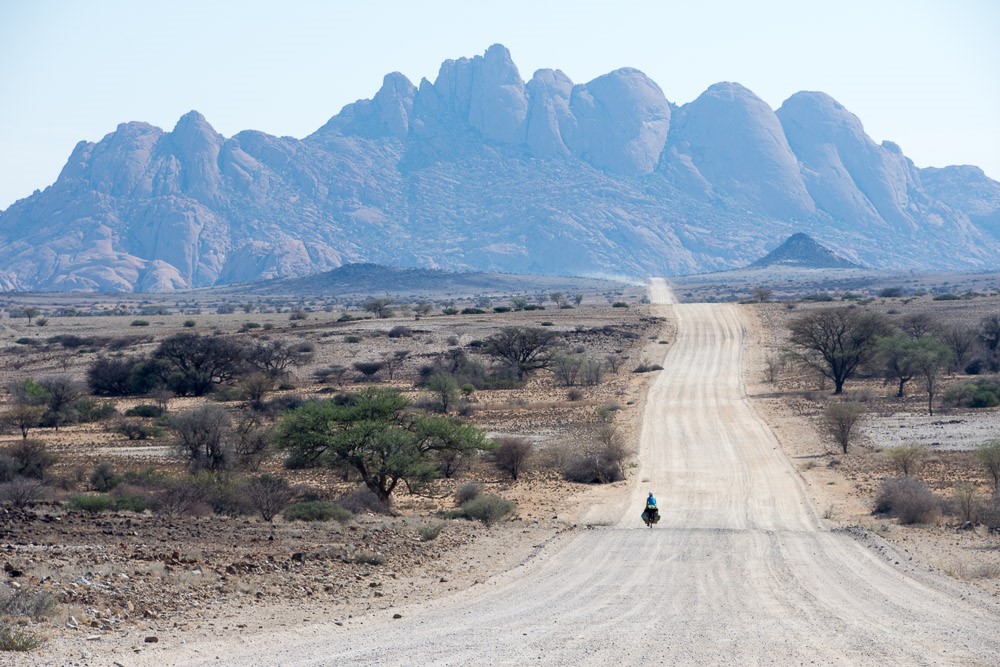
You can easily plan your own cycle trip in Namibia – despite being remote, there are lots of places to stop at and larger towns to base your travels around however, you can also find some great adventure holidays where the planning hassle has been done for you (why not check out Mountain Bike Namibia’s classic bike tour for a good place to start). There are also some great bike rental options too in Windhoek and Swakopmund if you fancy just adding a bit of cycling to a wider holiday.
In this blog, we’re merely hoping to spark your wanderlust and run through a few compelling reasons to get your bike over to Namibia.
The breathtaking landscapes
No matter where you are in Namibia, the landscape is pretty cool and nothing like you’ll find nearer to home, that’s a certain. From the dunes to the coast, the savannah lands to the north to amazing geological landscapes such as the Fish River Canyon and Spitzkoppe, there’s something for everyone.
Desert
Namibia is home to two deserts: the Namib and the Kalahari. We’ll be focusing the Namib Desert; the oldest desert in the world. Perhaps the most famous landmark are the sand dunes of Sossusvlei where you can not only enjoy the beauty of the dunes, but also a variety of experiences such as fat biking, desert safaris, 4X4 off roading, skydiving, sand boarding and much more.
For those who prefer a quieter time – just climbing the dunes and enjoying the stars at night will offer an experience you’ll never forget. Roads leading in and out of this area are a mixture of gravel and tarmac, meaning you can cycle there easily, or bring your bikes with you to explore the landscape when settled in a lodge or campsite.
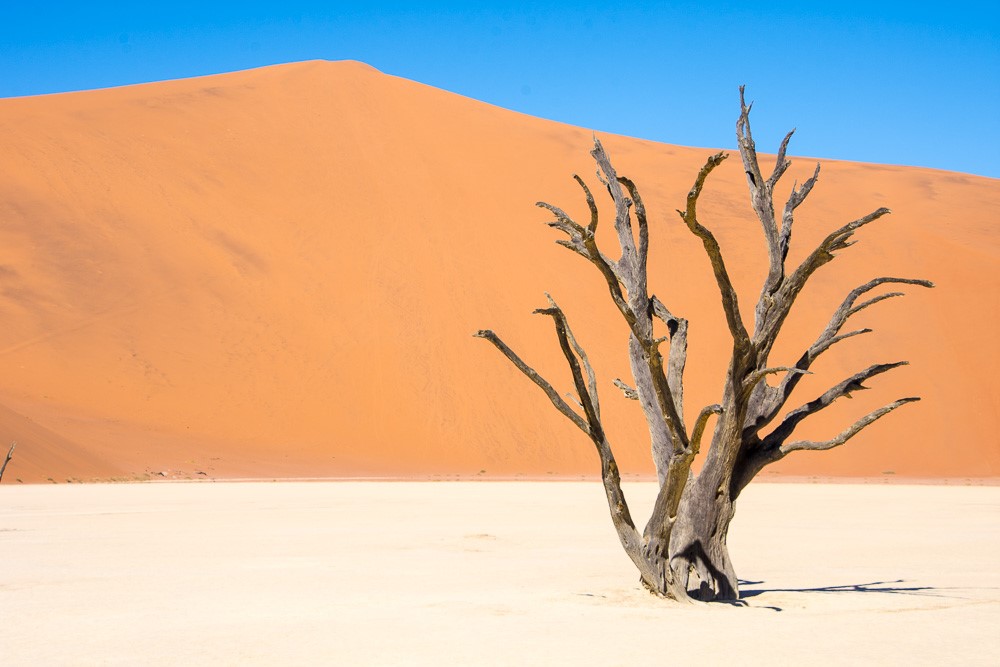
Coastlines
The Skeleton coast gets its name from the remains of the shipwrecks that litter the coastline from the treacherous seas and fog – the Portuguese sailors once referred to the coastline as the “Gates of Hell”, meanwhile the indigenous San people call this region “The land God made in anger”! Let this not put you off though as there is much exploring to do, and a cycle along the coast line is beautiful and invigorating. There are numerous nature reserves along the coast offering great trails for day trips too.
Mountains and rocks
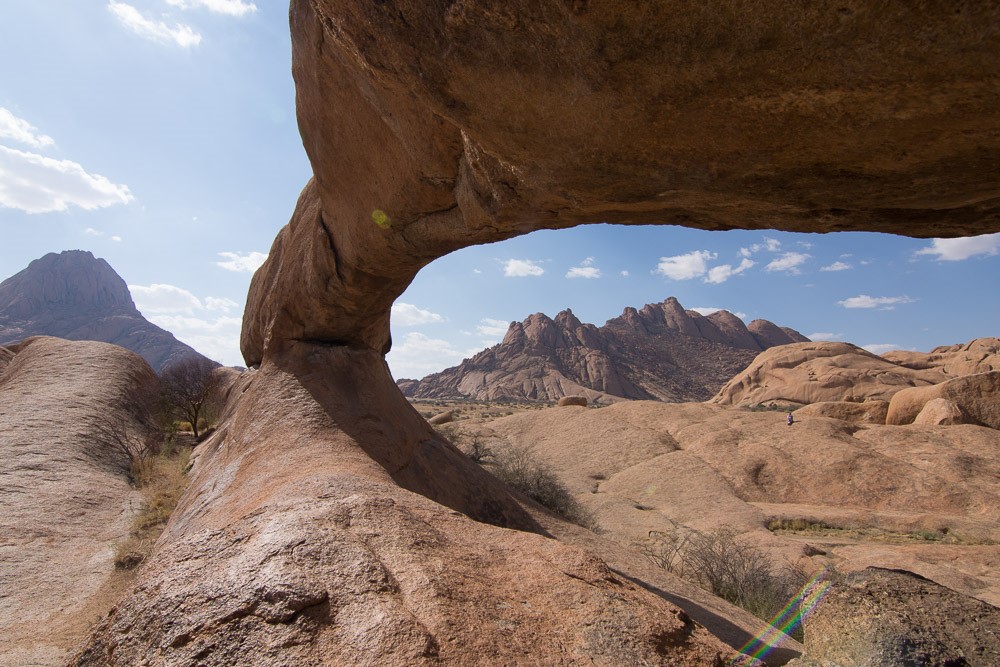
Spitzkoppe, the ancient land of the San people, is well worth a visit. Formed of distinctive granite peaks (the highest reaching over 1,700m) within the desert, if you are lucky, you might spot some ancient cave paintings. The roads in this part of Namibia are predominantly well managed gravel, or tarmac so if you’re looking to travel the country on your own, there are great routes in and around the area. However, if you’re taking your mountain bikes on a 4X4 and driving across the country, then Spitzkoppe offers some fantastic MTB trails. It’s also a popular area for hiking and rock climbing so it’s a good spot for wilderness adventuring if you have a bit more time.
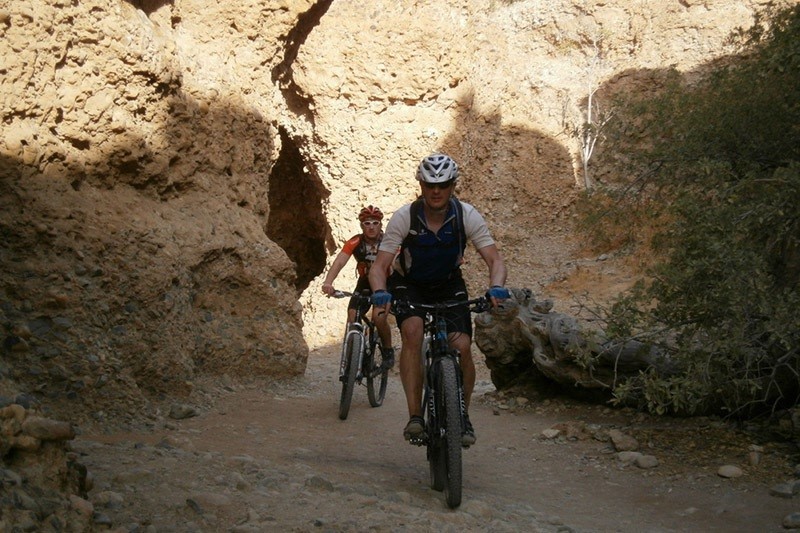
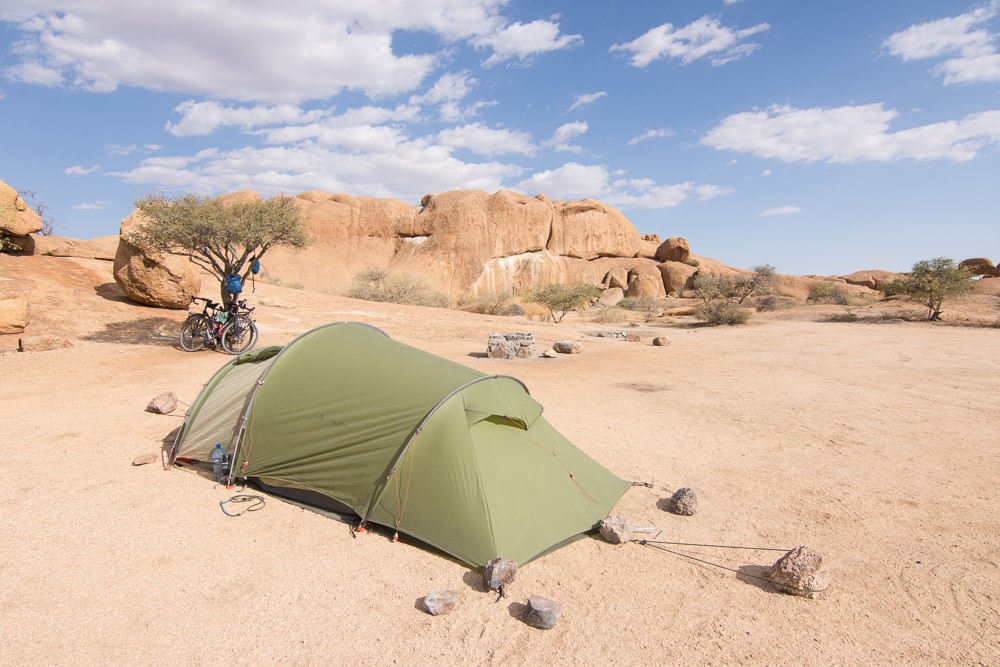
The wildlife
While you can’t cycle round a safari park, it would be a shame to get so close to wildlife without stopping off for a few days to try and spot some. With any wildlife encounter, an element of luck is involved, or a skilled guide.

Namibia offers the opportunity to see some amazing desert wildlife (think snakes, lizards, spiders living under the sand) but also your more traditional safaris in Etosha National Park where, if you’re lucky, you can see most of the famous African animals. What’s more – it’s a fantastic place to safari on a budget with campsites and self-drive options available as well are the more luxury end of the market.

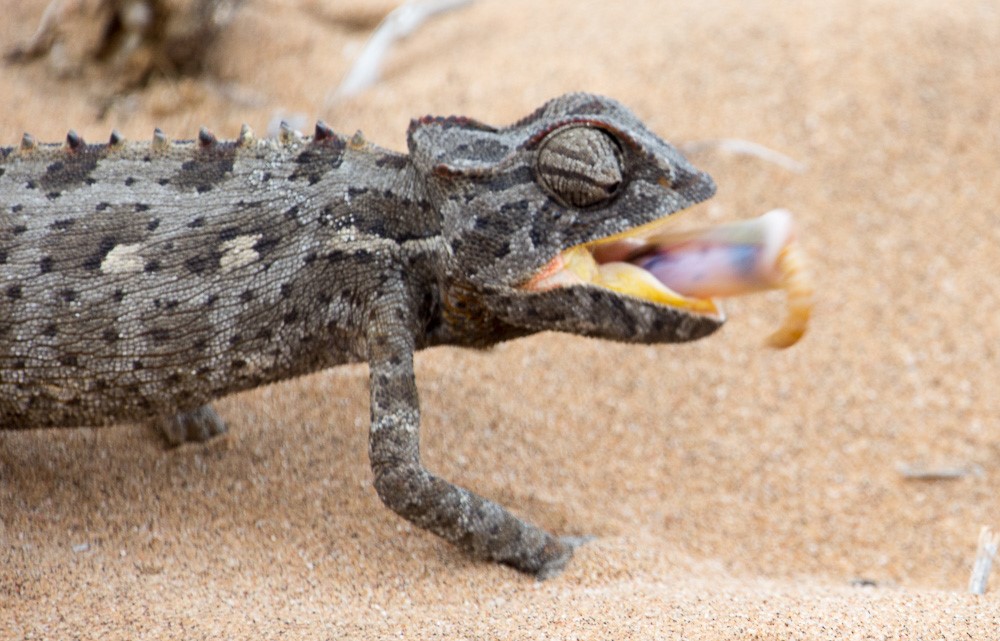
The culture and people
Namibia only has a population of 2 million but is home to 13 ethnic groups who speak 16 languages. What’s more, German colonialisation has also left its mark with much of the population speaking German. You’d be forgiven for thinking you’re in Europe while walking through Windhoek at times!
The San (bushmen) in the East, and the Himba in the north are perhaps the better-known ethnic groups and keep to traditional nomadic lifestyles.
The San men still hunt with bow and arrow, while the women forage for plants, roots and berries in the Kalahari Desert. The Himba men are nomadic cattle and goat herders, and this group are very distinctive in their appearance often wearing animal skins and painting their bodies and hair in an red coloured orche from the land (offering protection from insects and the sun).
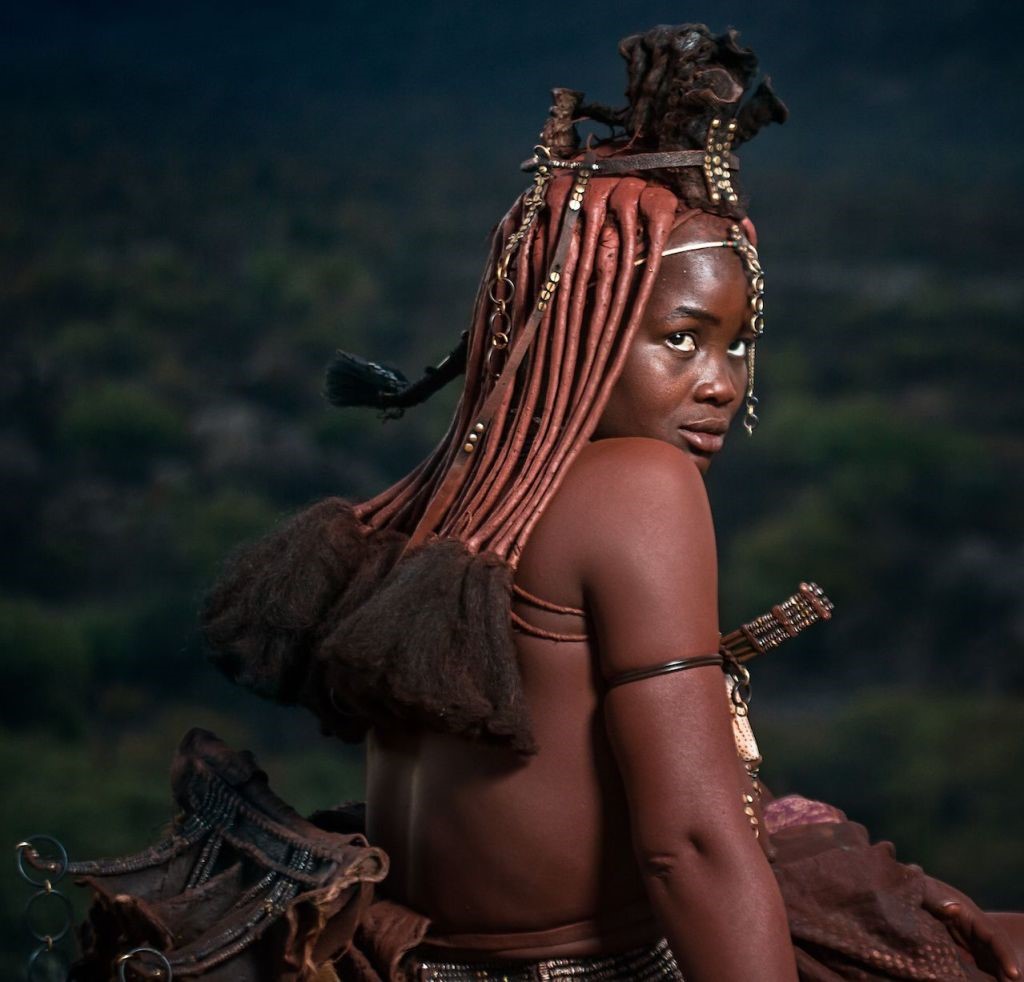
Have we inspired you?
If you’re looking for a helping hand on planning a biking holiday in Namibia, it’s worth taking a look at Mountain Bike Namibia who have some fantastic organised tours encompassing some of the areas mentioned in this blog, and much more in, all organised for you to just be able to enjoy the beauty of the landscapes and culture from two wheels.
Yellow Jersey’s travel insurance covers cycling holidays in Namibia and if you want to take your bike over with you, our bicycle insurance will cover your bike in transit as well as while you are away.
Why not get a quote or speak to our friendly team if you have any questions by calling 0333 003 0046.